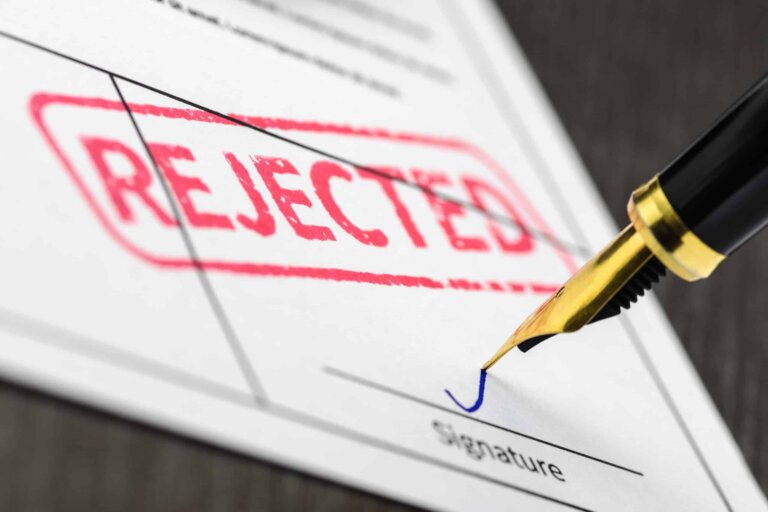Did you know that about 86% of patent applications are rejected on the first try? Some of the rejections we see most frequently boil down to just a few reasons: you didn’t fill out the application correctly, your invention was too close to another patent, the patent examiner didn’t believe your invention qualified as non-obvious or unique, or your invention didn’t meet the standards needed to qualify for a patent in the first place.
It’s important to note that the USPTO allows you to either appeal or amend your application—that is, you can either argue against the reasons listed in the rejection or correct the errors in your application. After that, you have to resubmit your paperwork and begin the process all over again.
So, how can you make sure you don’t have to spend a few more months waiting for a response to your application? Your best bet is to:
- Consult with a seasoned patent attorney who can guide you through the patent application process and work with you to plan for and respond to any potential issues that arise during the application process.
- Be as thorough and meticulous as possible as you pull your patent application together.
Officially submitting a patent application for your work is exhilarating—but it can also be bewildering and frustrating. There’s nothing more frustrating than having your application rejected after you spent hours rereading and tweaking it, especially if you could have easily avoided making the mistakes listed in the rejection letter. Here are a few of the most common reasons your patent might be rejected:
- Your invention is obvious: Essentially, this means that the patent examiner felt that someone with an “ordinary skill level” in your invention’s field could design and create your invention based on prior art.
- Your service or product is not novel: The examiner didn’t believe that your design was distinct enough from similar inventions to qualify.
- You didn’t follow the application process correctly: You’d be surprised to hear just how often this comes up in patent rejections. If you don’t review your application carefully before you submit it, it can be easy to miss a step or fail to supply the necessary information.
- You’re trying to patent ineligible subject matter: Even if your idea is novel and non-obvious, some things simply don’t qualify for patents. If you’re not sure if your invention is patentable, it’s a good idea to run it by a patent attorney before you start your application.
- The drawings in your application do not abide by the USPTO guidelines: Any illustrations you include in your application must be black and white, with no smudges, blurry lines, or stray marks. Many inventors choose to work with an artist who specializes in patent illustrations for this reason.
- Your application included errors or typos: Luckily, avoiding this one is relatively simple: resist the temptation to submit your application as soon as you’ve completed it. Instead, take a few minutes to thoroughly proofread it first—you’ll thank yourself later.
Perfecting Your Patent Application
Although every patent application has its own unique set of challenges, you can take some steps to get your application as polished as possible before you submit it.
- Perform a prior art search.
- Consider submitting a provisional patent application: Provisional patent applications are an excellent option if you want to begin the patent process but need extra time to fine-tune your invention (and application!)
- Make sure your application is detailed, thorough, and correct: Patent applications require you to document your invention in exhaustive detail. This can be a time-consuming and difficult task, so it’s important to check every aspect of your application before submission.
- Consult a patent attorney: Patent law is a nuanced, complicated field, and it’s easy to underestimate the research, expertise, and consideration the patent application process can require. Enlisting an expert early in the process will head off unnecessary confusion and missteps on your part.
Unfortunately, there is no way to guarantee a first-time approval for any patent application. But following these suggestions—and enlisting professional help, if you can—is the best way we know of to succeed. To schedule a free Discovery Call with one of our Bold Attorneys, call 800-849-1913 or contact us.

